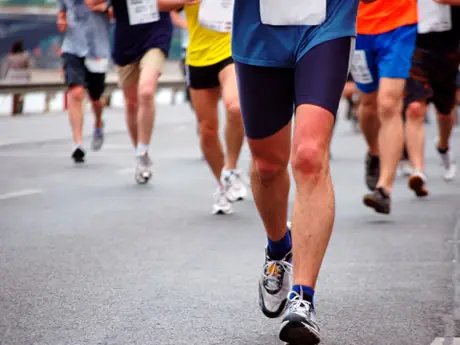Drills
This is not a well-researched area, but running, skipping and plyometric drills can be another way to expose the body to the skeletal demands of running. Drills allow the body to experience success, again building on the theme of "easy victories." Drills also include a ballistic component that can be modulated from relatively low impact (low skipping) to higher impact (bounding and high-knee running). Additionally, multidirectional drills can expose the brain to novel experiences that it has not learned to associate with pain.
Match Mobility with Stability
When you stretch, do something to strengthen. For example, as you work to increase pliability of the plantar fascia in plantar fasciitis, be sure to improve balance by standing on one leg or by strengthening the lateral muscles of the hip. As another example, stretching the IT band and related musculature should be paired with exercises to strengthen the lateral hip muscles.
Touch
Foam rolling has become a popular and potentially effective way to self-manage injuries. It's more likely that the real benefits of foam rolling are in how the brain perceives touch rather than the purported benefit of changes to the mechanical properties of soft tissue. One theory is that the mild muscle and tendon deformation that occurs during foam rolling is a way to let the brain know that increased tissue pliability is safe. Remember, you should always match mobility with stability; pair foam rolling or any related massage interventions with stability exercises.
More: Hip Strengthening and Mobility Exercises for Runners
Certain injuries require specific interventions and rehabilitation directed at damaged tissue. But even in such cases, swelling may be a subconscious reaction to a threat perceived by the brain. The goal is to learn pain-free movement.
Think of pain as a bug in the operating system, not necessarily a hardware fault. Inputting the right code with easy victories, running drills and soft tissue interventions can help reprogram the subconscious brain to view running with the same enjoyment that our conscious brain brings to the sport.
 Sign up for your next race.
Sign up for your next race.- 2
- of
- 2
About the Author
Allan Phillips
Get ACTIVE on the Go


Couch to 5K®
The best way to get new runners off the couch and across the finish line of their first 5K.
Available for iOS | Android







Discuss This Article